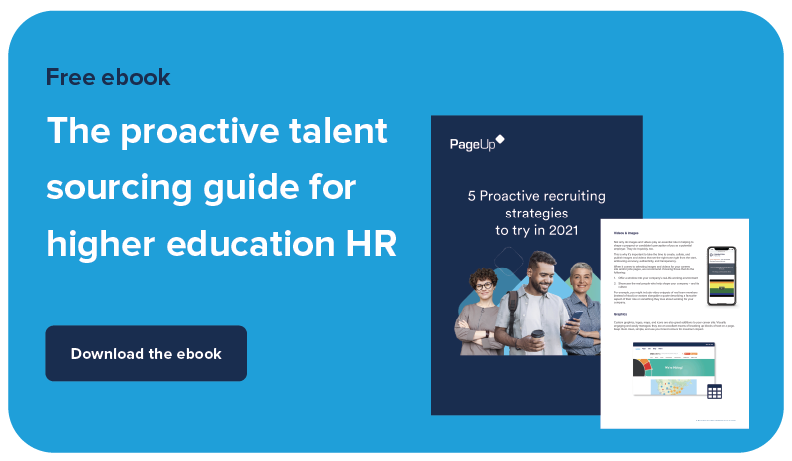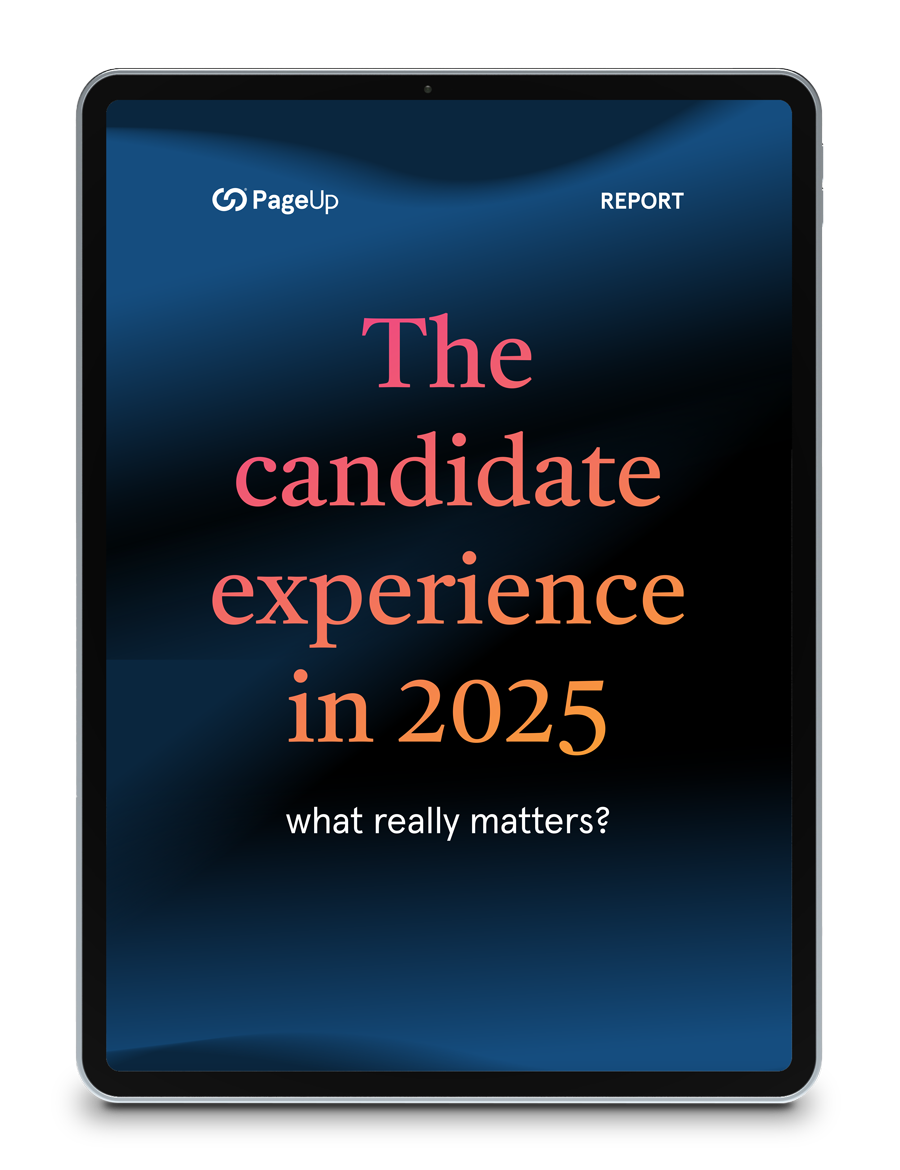Universities and colleges were previously seen as some of the most attractive places to work. They’ve had a long tradition of meaningful work and job stability. These factors were crucial talent attraction and retention drivers.
But here’s the thing: perceptions and priorities have changed. Academics are retiring early due to COVID-19. Most employees don’t want to return to campus full-time. And many are prepared to leave their meaningful work behind in search of the compensation corporate jobs can offer.
What’s more, tighter budgets and a leaner workforce have made it almost impossible for HR teams to work diligently to build quality relationships with talent.
To attract and retain the best faculty and staff in the new world of work, HR leaders must adopt a proactive mindset that will allow them to identify and track their future needs.
Every experience will matter – from recruiting and onboarding to exit and rehire. Higher education will need a multi-pronged approach to sourcing, engagement, and development.
Throughout this ebook, we’ll share 5 proactive strategies to help higher education HR design and build a workforce for the future.
You’ll learn:
- Why institutions are losing quality talent to competitive markets
- Essential high-volume recruiting tactics for hard-to-fill academic and senior management roles
- How HR leaders can adapt to changing candidate and employee expectations
- 5 crucial activities to position your institution as an employer of choice
Gain instant access to the full ebook below.
The state of higher education hiring
COVID-19 has forced higher education institutions to re-examine everything they do. Last year, leaders worked tirelessly to facilitate the transition to remote work. But now that employees are firmly rooted in the comforts of their home offices, there are new challenges for higher education HR. Here’s what’s happening in the industry:
- Faced with the prospect of returning to campus, many workers are quitting instead of surrendering the flexibility of their work-from-home lifestyle.
- Dissatisfied with pay freezes and burnt out from increased workloads, employees are eyeing off the attractive compensation packages the corporate sector is offering.
- The higher education workforce is aging – and the global pandemic forced many older workers into early retirement.
Severe budget cuts also forced many colleges and universities to freeze hiring, cut positions, and, in some cases, decrease salaries. According to CUPA-HR’s Administrators in Higher Education Annual Report, when salary increases occurred in the higher education workforce over the past year, they tended to go to faculty, professionals and staff rather than administrators. Higher education administrators overall received near-zero pay increases.
Higher education: a great place to work?
Institutions can no longer assume that the American workforce will consider higher education a great industry to work in. In fact, a recent CUPA-HR study showed that most millennials and Gen Z have poor perceptions of the industry’s culture and compensation.
The study also found that 70% of Black Americans and 60% of LGBTQ+ Americans aren’t convinced higher education can offer a diverse, inclusive, and equal opportunity work environment. These perceptions pose huge challenges for colleges and universities looking to diversify their workforce and build strong teams.
Returning to “business as usual” is not the strategy to help institutions recruit, retain and engage talented colleagues. These people are at a great risk of being whisked away by the corporate sector or other colleges and universities with a more forward-thinking approach to work and stronger commitment to their employees.
Higher education must fix its DE&I perception issues, improve pay, and amplify a great employer brand to be seen again as an attractive place to work. HR needs a clear plan built on insights and expert advice with the right tools to implement it. Without clear goals, institutions can expect to see more quality employees jumping ship to the corporate sector.
Learning and development: it’s important for employees, too
When colleges and universities discuss learning, they often focus on the students’ learning outcomes. But even some of the best institutions are falling behind when it comes to offering similar opportunities for their employees. Recent LinkedIn data shows that 94% of employees would stay with their employer for longer if they invested in their learning.
With the added challenges of working remotely, higher education must look for new ways to keep people engaged. HR professionals should look to advance their employees’ skills with the same rich online learning opportunities offered to students.
Delivering an exceptional candidate and employee experience
In this candidate and employee-driven job market, experiences can make or break your ability to hire and retain the best. HR practitioners must now consider the perspectives of existing and future talent. This statement is particularly true for those operating in higher education.
While proactive recruiting strategies will remain critical for sourcing faculty and staff, higher education HR teams must also cater to modern-day expectations. That means effectively communicating your institution’s culture and values internally and externally, and providing positive, high-touch experiences for job applicants.
Because in 2021 and beyond, every experience will matter. From recruiting and onboarding to exit and rehire. Higher education HR will need to take a multi-pronged approach to sourcing, engagement, and development – or risk losing the battle for top talent.
Throughout this ebook, we’ll share 5 proactive strategies to help higher education HR design and build a workforce for the future. But first, let’s explore what proactive recruitment is and what it looks like.
Proactive solutions
What is proactive recruitment?
Proactive recruitment is a strategy that focuses on sourcing, engaging, and attracting candidates ahead of hiring demand.
Unlike reactive recruiting – which is all about the roles to be filled here and now – proactive recruitment can help institutions build valuable relationships with candidates for their future hiring needs.
While reactive hiring approaches may help meet short-term goals, proactive hiring helps recruiters pipeline candidates and nurture them in warm talent pools. In other words, proactive hiring helps talent acquisition teams to build long-term professional relationships with passive talent – ready for future opportunities.
As higher education institutions look to rebuild their workforce after a year of pandemic-related layoffs and lockdowns, competition for talent is heating up. Proactive recruitment strategies are the only way colleges and universities will attract the talent they need.
One major change unites these 5 proactive recruiting strategies: traditional hiring boundaries have been redrawn. In a world that’s grown accustomed to the remote-work lifestyle, conventional hiring wisdom and talent attraction have changed.
Hiring teams across all industries must look beyond talent acquisition and take a holistic view of talent that incorporates ex-employees and internal skill sets. Forward-thinking institutions hire from global talent pools, adopt virtual recruiting technologies, and prioritize diversity, equity, and inclusion (DE&I).
And with so many employees in search of job flexibility and better salaries, adopting a fresh perspective on talent acquisition will be the key to staying competitive.
It’s not enough to rely on old sourcing strategies and assume talent will find you. The days of posting an ad in a higher education publication or on a local website and being flooded with applicants are well and truly over.
In today’s competitive job market, even the best institutions must adapt and build a steady pipeline of candidates ready for when a role arises. But many struggle to gather and nurture enough candidates to have on hand.
Gain instant access to the full ebook below.
Fresh insights for HR
Stay up to date with HR trends, tips and more when you sign up for our industry newsletter






